By Josie Noah, Chief Global Officer, SightLife, and Shaifali Sharma, Director of Prevention Program, SightLife India
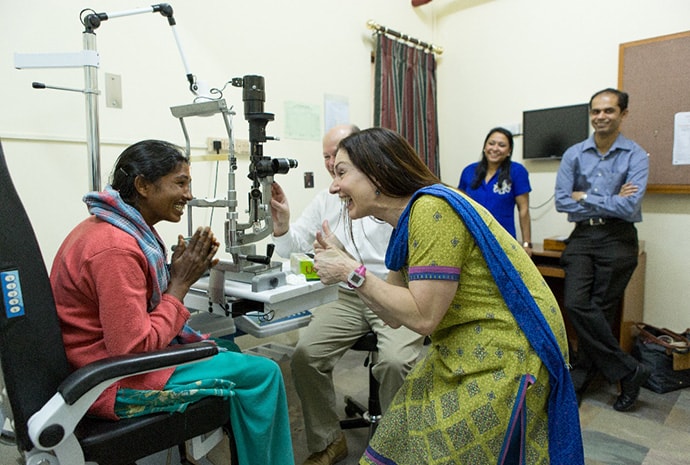
ChandBee with Dr. Audrey Talley Rostov. Photo © Margot Duane.
ChandBee is an agricultural worker and mother living outside of Hyderabad, India. When she began to lose her sight at 25, it became increasingly difficult to work in the fields alongside her husband. Without her income, they could no longer provide for their family and her children were eventually forced to move into an orphanage. After four years of severe eye pain, ChandBee received a corneal transplant from SightLife partner, L.V. Prasad Eye Institute. With her sight restored, she returned to work and was reunited with her children.
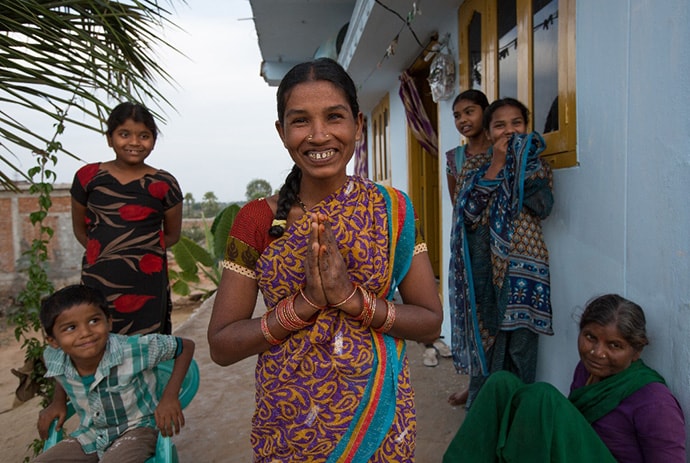
ChandBee with her family. Photo © Margot Duane.
Eye injuries and loss of vision are devastating for agricultural workers like ChandBee. When left improperly diagnosed or untreated, eyesight can be lost – which not only compromises one’s own livelihood and ability to feed their own family, it also contributes to the broader issue of food insecurity if fewer farmworkers are available to work. Globally, it is estimated that the annual productivity losses associated with vision impairment are estimated to be US $411 billion[1].
Global food insecurity is lack of availability and or affordability of nutritionally adequate food, resulting in malnutrition among people in low- and middle-income countries (LMICs). It is estimated that between 720 and 811 million people in the world faced hunger in 2020[2]. While climate change, political conflicts and economic slowdowns have a major role to play in ensuring food security, welfare and health of farmers is a critical cog in the wheel.
Farming and agriculture are essential to human life, yet there are hurdles aplenty in getting food on tables worldwide. With the Sustainable Development Goals on food security not yet meeting targets, the safety and well-being of farmers becomes even more critical.
Unfortunately, access to health care – especially eye care services – remains unobtainable in most rural regions of low- and middle-income countries, which is also where agriculture is centered. While the eye injuries and health-seeking behavior patterns may be the same for farmers worldwide, the access and affordability of eye care varies greatly. For most LMICs, eye care services are not integrated into the primary health care system, which makes it even more challenging to get diagnosis and treatment. With not enough eye surgeons and trained ophthalmic assistants, the problem is compounded further.
At SightLife, our Continuum of Care approach improves access to the right level of eye care, especially for farmworkers who often live in remote, agricultural regions. We do this by building capacity of the existing health care personnel in the communities we serve – from frontline community health workers to corneal surgeons.
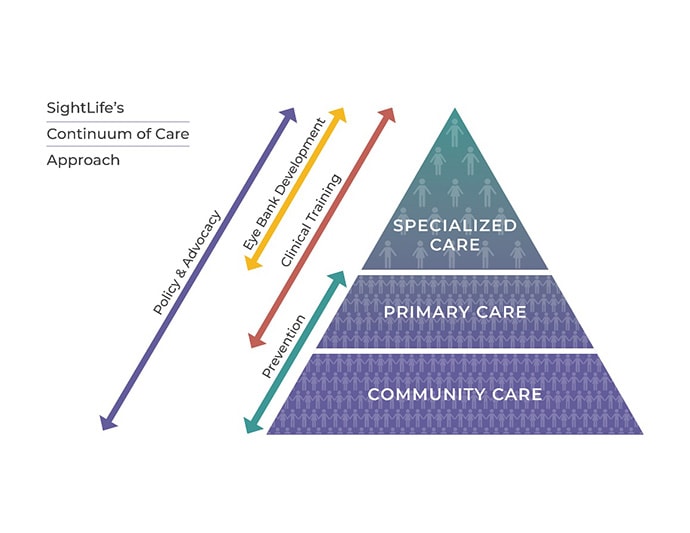
First, we train community health workers who serve remote communities to diagnose and treat corneal abrasions, often inflicted from field work – saving their sight through topical antibiotics so they can continue to work, providing for both their family and community. Community health workers refer complex cases to the appropriate level of care for treatment. SightLife has designed curriculum for both primary care, including general providers and ophthalmic assistants, as well as tertiary care, including ophthalmologists and corneal surgeons.
When treated early in this Continuum of Care Approach, only a small subset of patients will require the most intensive, corrective surgeries by corneal surgeons. Most patients’ sight will be saved, allowing them to return to work and normal life in a matter of days.
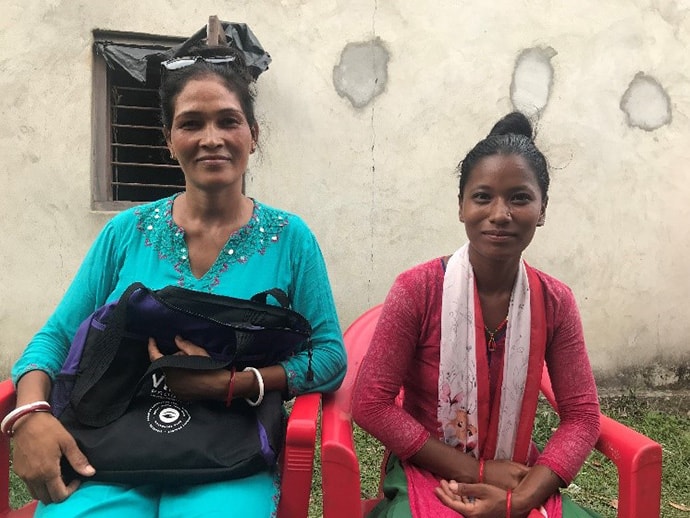
Meena (right) with the Community Health Worker who saved her sight. Photo: SightLife.
People like Meena, a 22-year-old mother from a remote village in Nepal and the sole provider for her family. When she suddenly suffered an eye injury, she worried what would happen to her family if she was not able to work. Fortunately, Meena had access to a SightLife-trained community health worker who quickly identified and treated the scratch on her cornea – ensuring Meena could return to work and keep her family whole.
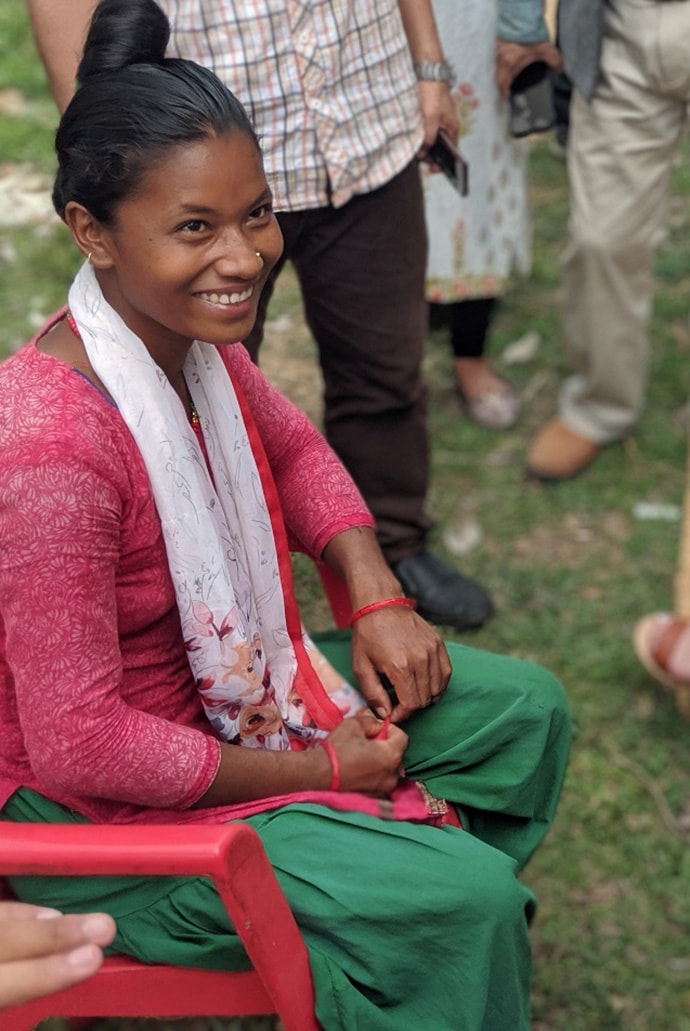
Meena. Photo: SightLife.
Experiences like Meena’s and ChandBee’s are proof of the intersection of eye care and food security. When individuals can access affordable care without significant barriers, they can continue to provide for their own family and continue to play an integral part in feeding the communities in which they live. The bottom line: By strengthening health systems, we can directly impact the global food insecurity problem.
SightLife is actively looking for NGO and private sector partners who work with small-holder farmers to bring accessible eye care services to their communities.
[1] Burton MJ, Ramke J, Marques AP, Bourne RR, Congdon N, Jones I, et al. The Lancet Global Health commission on Global Eye Health: vision beyond 2020. Lancet Glob Health. 2021; 9(4):e489–e551.
[2] Food and Agriculture Organisation of United Nations; Article accessed on October 17, 2022- The State of Food Security and Nutrition in the World 2021 (fao.org)